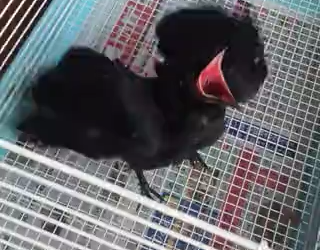Rescued from an animal shelter, Staffordshire terrier Bruno spent more than 10 years with his human family — until it was time to let him go.
“He was the most placid, forgiving dog but very protective as well,” said Bruno’s owner David O’Connor, who lives on Queensland’s Sunshine Coast.
But with many options available to extend your pet’s life, knowing when to say goodbye is a difficult decision.
As the family’s children aged, so too did Bruno.
He developed arthritis in the hips which restricted movement, and had signs of dementia and incontinence.
“He wasn’t as perky; then, on top of that, he started getting dementia … he was walking around in circles.
“I noticed he was defecating near his food and throwing up.
“He was in a lot of pain and I don’t think he was aware of where he was anymore.”
Mr O’Connor said the family knew it was time to have a conversation about ending Bruno’s life.
“I really had to reflect on, ‘Am I keeping the dog alive not for the best interests of the dog? And are we being selfish … because [we] want to prolong the inevitable?'” he said.
When to call time?
Bundaberg veterinarian Marianne Curran said the biggest consideration for owners of an elderly pet was the animal’s quality of life.
“In severe cases, your pet will become very lethargic and lose interest in doing the things they used to,” Dr Curran said.
“They may not want to go for their walks anymore, be interested in eating or playing like they used to, it may be things like incontinence where they are just constantly wetting themselves.”
She said a pet’s life span depended on the breed but on average, dogs could live between 14 and 16 years while cats could reach 16 to 18 years old.
Dr Curran said in some cases, medication could help with symptoms to improve the pet’s quality of life.
“But if they are at the point where medication isn’t helping anymore, that’s when it’s time to say goodbye,” she said.
Is my pet in pain?
Dr Curran said older animals often retreated from their owners when they were ready to die.
“[That is] a behavioural response that comes from when they were living in the wild, they would go off and separate themselves from the rest of their group so that they’re not endangering them.”
She said detecting pain or suffering in animals, especially dogs, could be difficult but their behaviour was a good indicator.
“With dogs, if it’s arthritic pain, you may notice that they take longer to get up from a lying-down position, that they may tire out a lot quicker when they are walking or lying in the yard.”
Abdominal pain could present as reduced appetite and being sensitive to touch.
“If they suddenly seem uncomfortable when you pat them in a way that they would usually enjoy, that’s a good sign that there’s something not right there,” Dr Curran said.
Detecting deterioration in cats was more difficult, she said, because felines were particularly good at hiding signs of pain.
“If they’ve stopped grooming themselves, that’s often a good indication that they are uncomfortable, or the opposite if they are just grooming excessively.”
Ways to say goodbye
The O’Connor family opted to farewell Bruno at the local vet clinic, but Dr Curran said that was no longer the only option.
She said many veterinarians offered a service to euthanise a pet at home, which could benefit both the pet and owner.
“They’re able to say goodbye in their own environment, it also avoids moving them around too much if they’re in pain.”
Dr Curran urged anyone with concerns about their pet to speak with their vet.
“We can give you guidance on what we can do to help them get that quality of life back and help decide when it is the right time for them.”




















